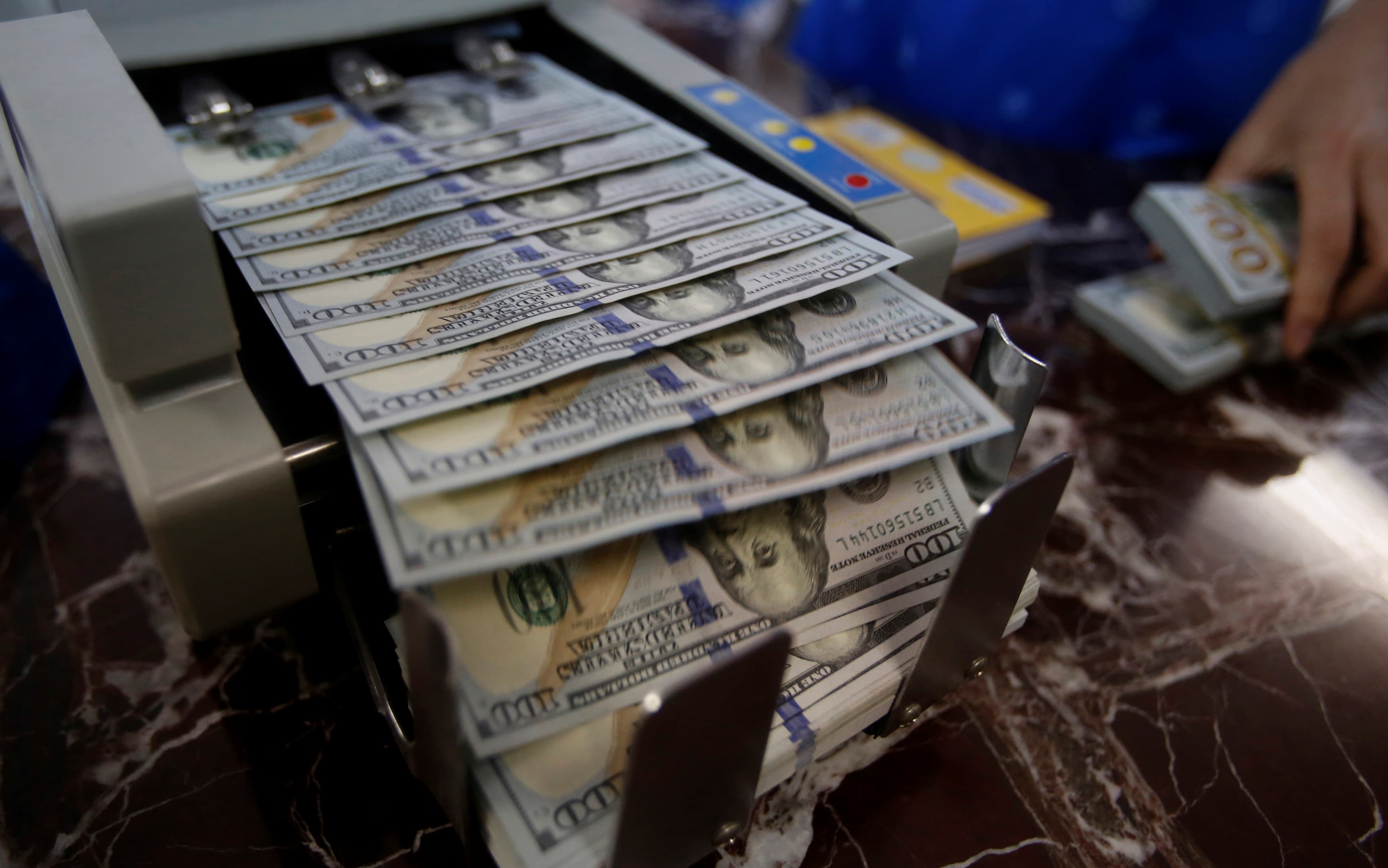
An employee of a bank counts US dollar notes.
Kham | Reuters
The dollar looked set to end the week with a firmer tone on Friday as markets scaled back bets on a U.S. rate cut, though much depends on what jobs data due later in the session says about the health of the economy and wages.
The currency has edged higher since Federal Reserve Chair Jerome Powell played down the recent slowing in inflation and saw no reason to cut interest rates.
That helped the dollar index recoup losses from earlier in the week to stand at 97.834 against a basket of currencies, up from a trough of 97.149.
It was little changed on the week so far, which was no big surprise given the market has lacked liquidity with Japan and China on holiday.
Against the yen, the dollar was idling at 111.46 having spent the entire week in a snug 111.03-111.89 range.
The euro was flat at $1.1174, having eased back from a $1.1219 top overnight, though it was still a shade firmer on the week. Eurozone manufacturing surveys out on Thursday showed further contraction in April, but at least got no worse.
"The flow of economic data fits with most central banks taking a cautious line, fearful of downside global growth risks," said Alan Ruskin, global head of G10 FX Strategy at Deutsche Bank.
"The USD will be helped by having a pre-existing yield advantage, with a central bank that is trying hard to send a steady policy message."
Interest rate futures imply around a 49 percent chance the Fed would cut rates by December, down from 61 percent late on Wednesday. Yields on two-year Treasuries were also up 6 basis points on the week so far.
The pricing on rates may change again depending on what the April jobs report reveals. Forecasts are for payrolls to rise a solid 185,000 with unemployment holding at 3.8 percent.
Analysts at NAB reckon there is a chance of an even stronger number given the run of leading indicators and the fact that March was held back by poor weather which cleared in April.
They are tipping a rise in jobs of 260,000, which would certainly put a spring in the dollar's step.
The risk for bulls would be a soft wages print given the Fed's focus on inflation right now. The median forecast is for average earnings growth of 3.3 percent and anything less could take the shine off the dollar.
Among the few movers for the week were the Australian and New Zealand dollars, which fell as speculators wagered both countries could see interest cuts next week.
The Reserve Bank of Australia (RBA) holds a policy meeting on May 7 and the Reserve Bank of New Zealand a day after and there is a real risk they might ease following recent disappointingly low inflation reports.
Futures imply around a 32 percent chance of a quarter point cut form the RBA, while swaps show a 53 percent probability of a move from the RBNZ.
The Aussie was down 0.55 percent for the week at $0.6996, with the kiwi off 0.6 percent.
https://cnb.cx/2V1xlva
May 03, 2019 at 07:49AM
Tidak ada komentar:
Posting Komentar